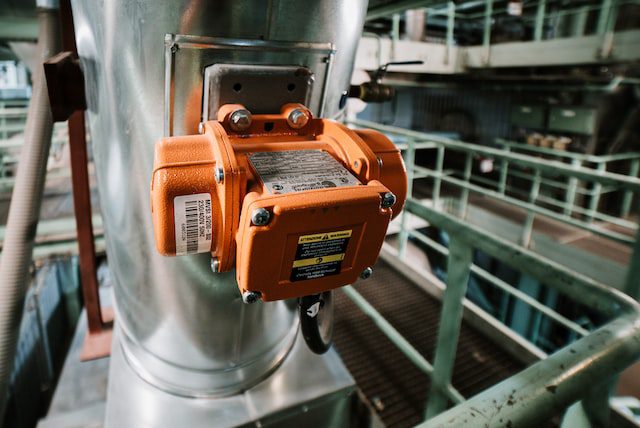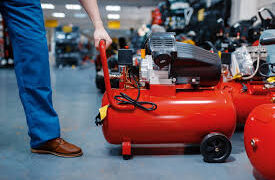Air compressors are used in a lot of different industries, but it’s not very often that we take the time to understand how they work and what benefits they can bring us. Manufacturing, construction, and even the medical industry will often use air compressors for their work.
This blog is going to tell you why air compressors are so important and how to use them. So if you’re interested in learning how to use an air compressor the right way, stay with us till the end.
What Can You Use an Air Compressor For?
You can use an air compressor for a lot of different things. In fact, there’s really no end to what you can do with one of these machines.
But before we get into the specifics, let’s talk about some of the basics. An air compressor is a machine that uses compressed air to power tools and equipment. It can be used for a variety of applications, including:
- Airbrushing
- Blowing leaves off your driveway
- Cleaning your car
- Spraying paint or sealant
- Helping you change a tire
How Do Air Compressors Work?
So how do air compressors work? Let’s take a look at the anatomy of an air compressor to find out.
In short, an air compressor takes in air and then compresses it, which makes it hotter. The compressed air is then cooled down so that it can be used in tools and equipment.
Now, there are two types of air compressors: the piston compressor and the rotary compressor. The piston compressor uses a piston to compress the air, while the rotary compressor uses a rotor to do the same thing.
Both types of compressors have their pros and cons, but in general, the piston compressor is more reliable and easier to maintain.
How Do You Use an Air Compressor?
If you’re new to using an air compressor, the process may seem a bit daunting. However, it’s actually quite simple once you get the hang of it. Here are the basics of how to use an air compressor:
- First, connect the air compressor to a power source and turn it on.
- Then, attach the air hose to the compressor.
- Next, open the valve on the air tank and bleed off any air that is in the tank.
- Now you’re ready to start using your air compressor!
- To use it, simply turn or adjust the regulator to the desired pressure and then press the trigger on the air gun.
- When you’re finished, release the trigger and turn the regulator back to the “off” position.
- Finally, disconnect the air hose and turn off the power to the compressor.
How Do I Choose the Right Air Compressor for Me?
When it comes time to choose an air compressor, it can feel a bit daunting. After all, there are a lot of different options out there. How do you know which one is right for you?
Here are a few things to keep in mind:
- The most important thing is to match the compressor’s CFM rating with the tools you plan to use it with. If you’re using a pneumatic drill, for example, you’ll need a compressor with a higher CFM rating than if you’re just using a drill.
- It’s also important to consider the tank size. If you plan on doing a lot of air-tool use, you’ll need a compressor with a larger tank size. If you’re just going to be using the compressor for occasional tasks, then a smaller tank size will do.
- You also need to consider the noise level of the compressor. Some compressors are very loud and can be disruptive. If you need to use the compressor in a quiet environment, you will need to choose a unit that produces minimal noise.
- A Few other things include power output, duty cycle, and warranty. The power output is important because it needs to be able to generate enough air pressure. The duty cycle is important because you need to know how often you will be using the compressor. The warranty is important because you need to know that the compressor is covered in case of any problems.
- And finally, think about where you’re going to be using the compressor. If it’s going to be in a confined space, you’ll need one that’s small and lightweight. If it’s going to be used outdoors, you’ll need one that’s weatherproof.
When choosing an air compressor, it is important to consider your needs and find a unit that meets those needs. By taking the time to do your research, you can find the perfect air compressor for you.
FAQs about Using Air Compressor – A Short Summary
If you’re considering using an air compressor, you may have some questions about how they work and what they’re used for. Here are some of the most frequently asked questions about air compressors:
How does an air compressor work?
An air compressor converts power into kinetic energy by compressing and pressurizing air. The compressed air can then be used to power tools and machinery, or to inflate tires and other objects.
What are air compressors used for?
Air compressors are commonly used to power pneumatic tools, such as nail guns and airbrushes. They can also be used to inflate tires, sports equipment, and other objects. In some cases, air compressors are used to generate power, such as in wind turbines.
How do I choose the right air compressor for my needs?
When choosing an air compressor, you’ll need to consider the size of the unit, the power source, the CFM (cubic feet per minute) rating, and the PSI (pounds per square inch) rating. You’ll also need to decide whether you want a portable air compressor or a stationary air compressor.
How do I maintain my air compressor?
To keep your air compressor in good working condition, be sure to regularly check the oil level and change the oil when necessary. You should also check the air filter and clean or replace it as needed.
Conclusion
Hopefully, this article has given you some useful information on how to use an air compressor. With the right tips and tricks, you can save time and money while still getting great results when using an air compressor. If you have any questions or would like to add anything to this article, feel free to contact us anytime at all. Thank you for reading, and as always, we hope this article has been helpful to you!



































